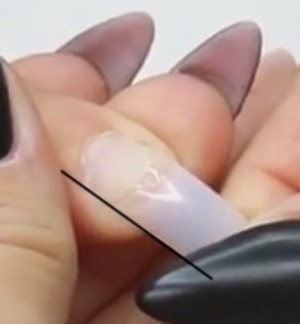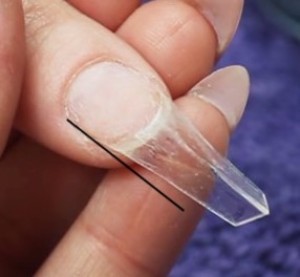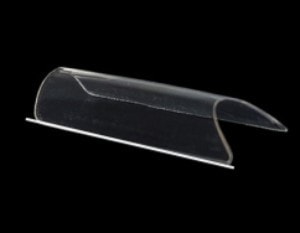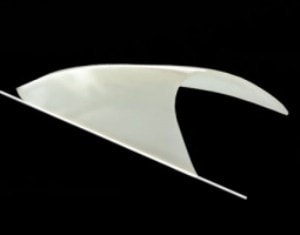What nail tips are best?
TYPES OF TIPS
Most nail tips are manufactured out of plastic such as acrylonitrile butadiene styrene monomers (ABS), a durable yet flexible material that can be shaped into a smooth surface that resists yellowing. When purchasing tips, seek virgin plastic which doesn’t contain recycled material when the plastic is re-melted and reused, otherwise it can cause quality issues such as cracking. Well-less, full or half-well is personal tech preference but there can be various benefits for each:
Well-less tips are the fastest and most versatile tip because they can be applied anywhere on the nail plate and don’t require blending and are perfect when creating an enhancement with a smile line.
Full-well tips have the largest contact point and can be seen to have the best grip. The large surface area is suitable for most clients, but is particularly good for camouflaging bitten nails and other imperfections because the well can cover up to half of the natural nail plate. Full-well tips require the most blending so are best covered with coloured product.
Half-well tips offer less coverage on the nail, so they’re quicker to apply and blend than full-well tips.
TAILORING YOUR TIPS
Just like sculpting nails using a nail form, for the perfect tip fit it can often be necessary to tailor your tips to fit your client’s nail. The most important thing to remember when sizing your tips is to always oversize, not undersize.

Correct sized tip
The width of the tip should fit from sidewall to sidewall for proper strength and structure. If you’re in between sizes, always go up a size and customise the tip to fit by filing using a 180 grit nail file or cutting the tip using our KB Tip Tailoring Kit.

Too small tip
By using a tip too small, as well as not creating a correct structure, this will leave a vulnerable area of natural nail with no product, that is more likely to get damaged while also causing discomfort to your client and give them that ‘pinched’ feeling on their nail plate.
When choosing the tip size, if you have any gaps at the side walls or when you press the tip to check the fit onto the nail and you can see pressure on the nail plate or the nail tip seems forced, the tip is too small.
Oversizing your tip but not tailoring it to fit, will also cause problems by leaving excess tip that will potentially cause your client discomfort or give them something to pick.
The length of tips will restrict you if your client wants very long enhancements or you are entering a competition with extreme lengths and minimum measurements, this will then require you to sculpt an enhancement.
Sidewall Structure
Ensure you chose a tip that doesn’t compromise the lateral wall structure. Many tips have a natural curve or arch in the side walls which will create a weakness and can be more common in almond shaped tips. It is important to choose a tip that provides you with a straight sidewall. I often like competition style tips because they are thin, easy to pinch if required and have parallel, straight side walls.

Straight side wall square

Straight side wall almond
Tip fitting for different natural nail shapes
Deep C-Curve
Some clients have nails with a naturally pronounced C-Curve. This deep C-Curve can make tip fitting difficult. Average tips will not lay tight in the nail grooves and can leave a gap at the contact point, so there is a tendency to select a tip too narrow for the nail.
First, examine the client’s nails and choose a tip with a C-curve that most closely matches the natural C-curve of the client’s nail plate. You can file a deeper C-Curve into a nail tip at the smile line area or use the KB Tip Tailoring Kit to cut this out. If you file your tip ultra-thin prior to fitting, you can also shape your tip more easily into a curve as it will be more flexible.
Flat nail
To fit a flat nail, it is important to have a flexible well. You can achieve this by cutting a small ‘V’ in the tip using KB Tip Tailoring Kit, as you may with a nail form. You can also use a file to remove the corners on a naturally deep C-Curve tip for flatter nail plates.
While it’s not always practical to have a wide variety of tips in your kit, it is beneficial to have several different choices and know how to tailor these to suit different nails.


Leave a comment